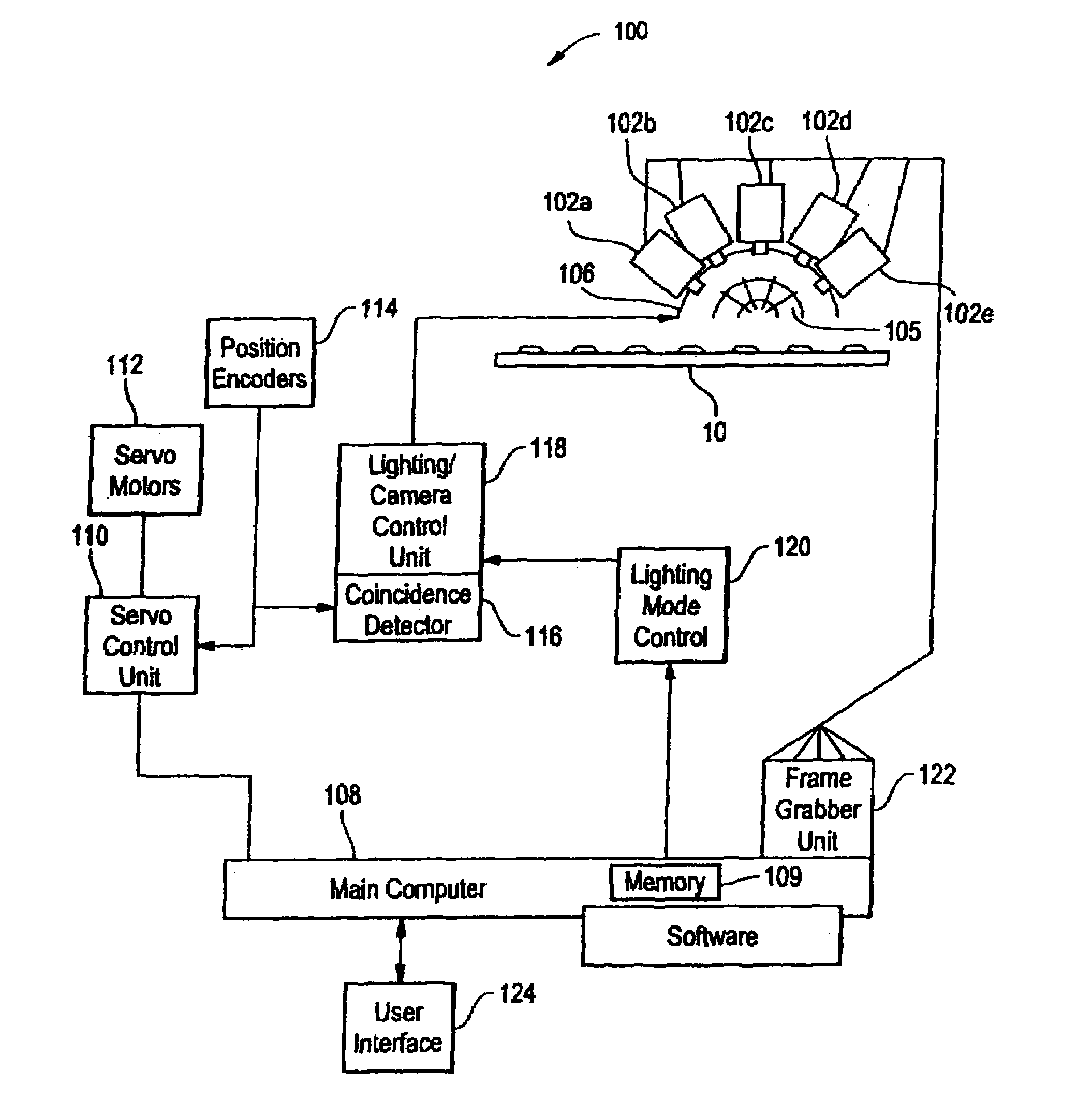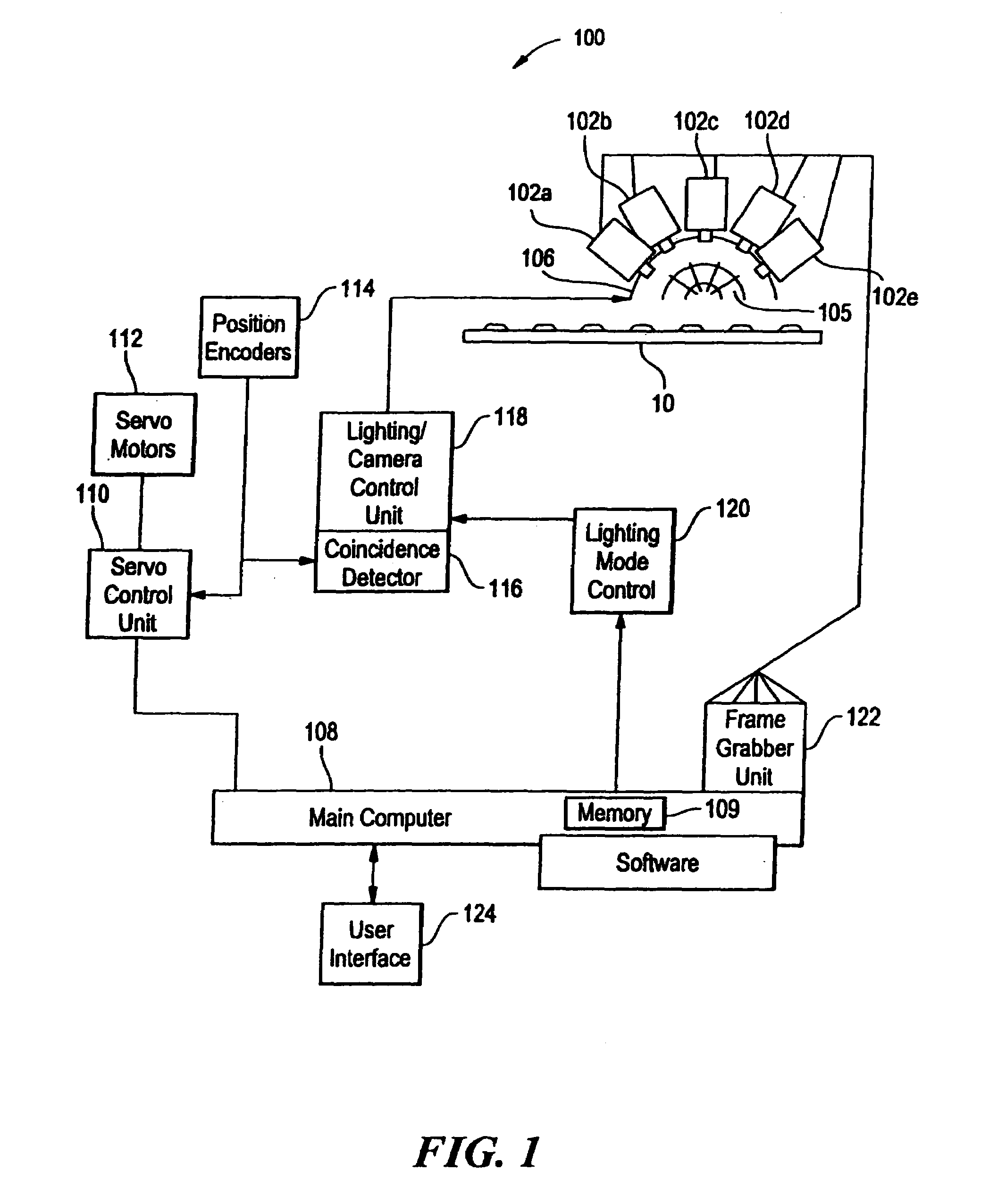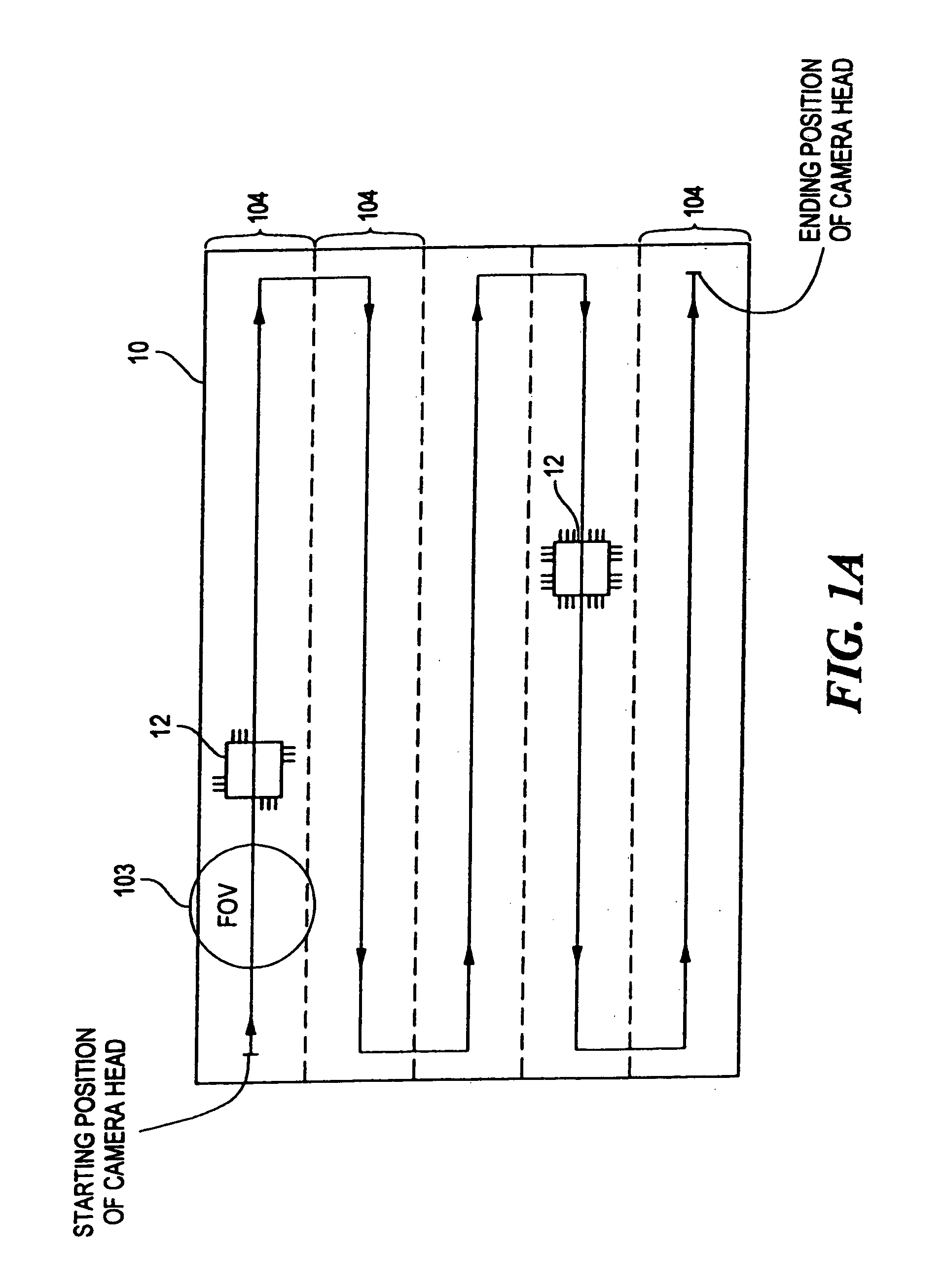Optical inspection system
an optical inspection and optical technology, applied in the field of automatic optical inspection systems, can solve the problems of affecting the inspection time of the inspection board, one lighting mode is unable to properly illuminate all four sets of toe fillets, so as to achieve the effect of minimizing the inspection tim
- Summary
- Abstract
- Description
- Claims
- Application Information
AI Technical Summary
Benefits of technology
Problems solved by technology
Method used
Image
Examples
Embodiment Construction
[0031]FIG. 1 shows an exemplary embodiment of an automated optical inspection (AOI) system 100 in accordance with the present invention. In general, the system 100 utilizes a series of cameras 102a–e to optically inspect an object, such as a printed circuit board (PCB) 10.
[0032]Referring briefly to FIG. 1A, the system 100 divides the PCB 10 into so-called stripes 104, which are subdivided into fields of view (FOVs) 103 that are analyzed to identify manufacturing defects associated with populating the PCB with circuit components 12, such as non-conforming solder joints. As known to one of ordinary skill in the art, the cameras move along the stripes to acquire the desired image data for the PCB. At any given time, each camera will have a predetermined FOV 103 corresponding to the position of the camera with respect to the PCB, as described more fully below. Since the inspection stations can be a bottleneck in a production environment, the decrease in board inspection time as compared...
PUM
 Login to View More
Login to View More Abstract
Description
Claims
Application Information
 Login to View More
Login to View More - R&D
- Intellectual Property
- Life Sciences
- Materials
- Tech Scout
- Unparalleled Data Quality
- Higher Quality Content
- 60% Fewer Hallucinations
Browse by: Latest US Patents, China's latest patents, Technical Efficacy Thesaurus, Application Domain, Technology Topic, Popular Technical Reports.
© 2025 PatSnap. All rights reserved.Legal|Privacy policy|Modern Slavery Act Transparency Statement|Sitemap|About US| Contact US: help@patsnap.com



